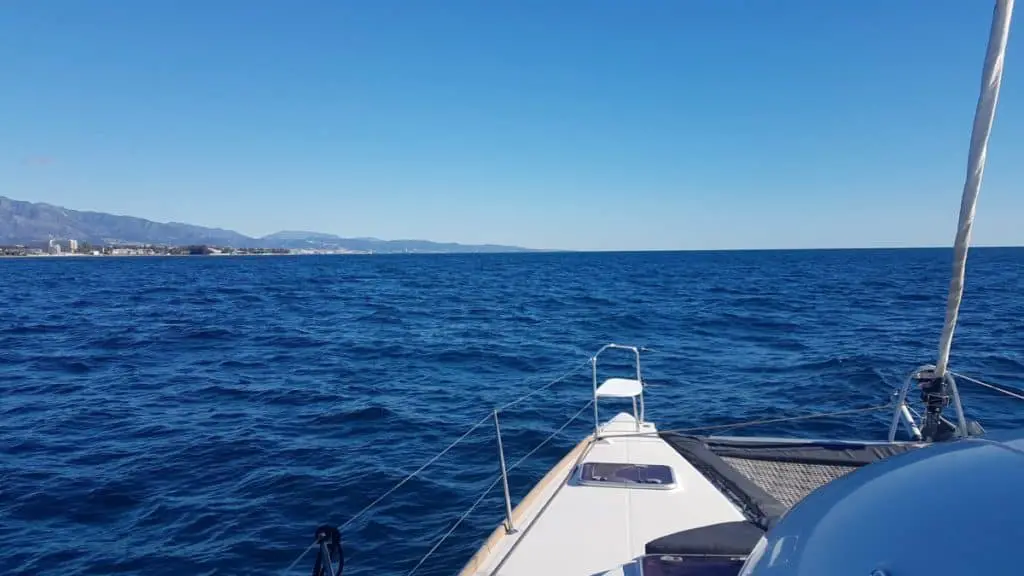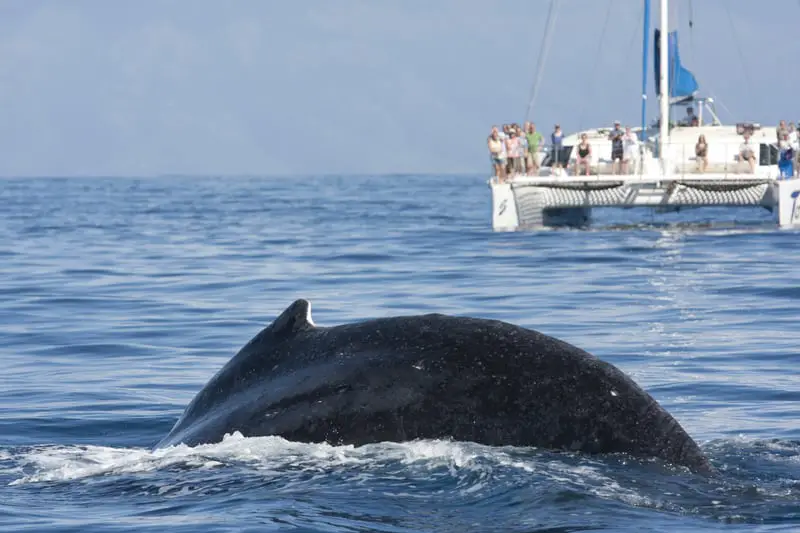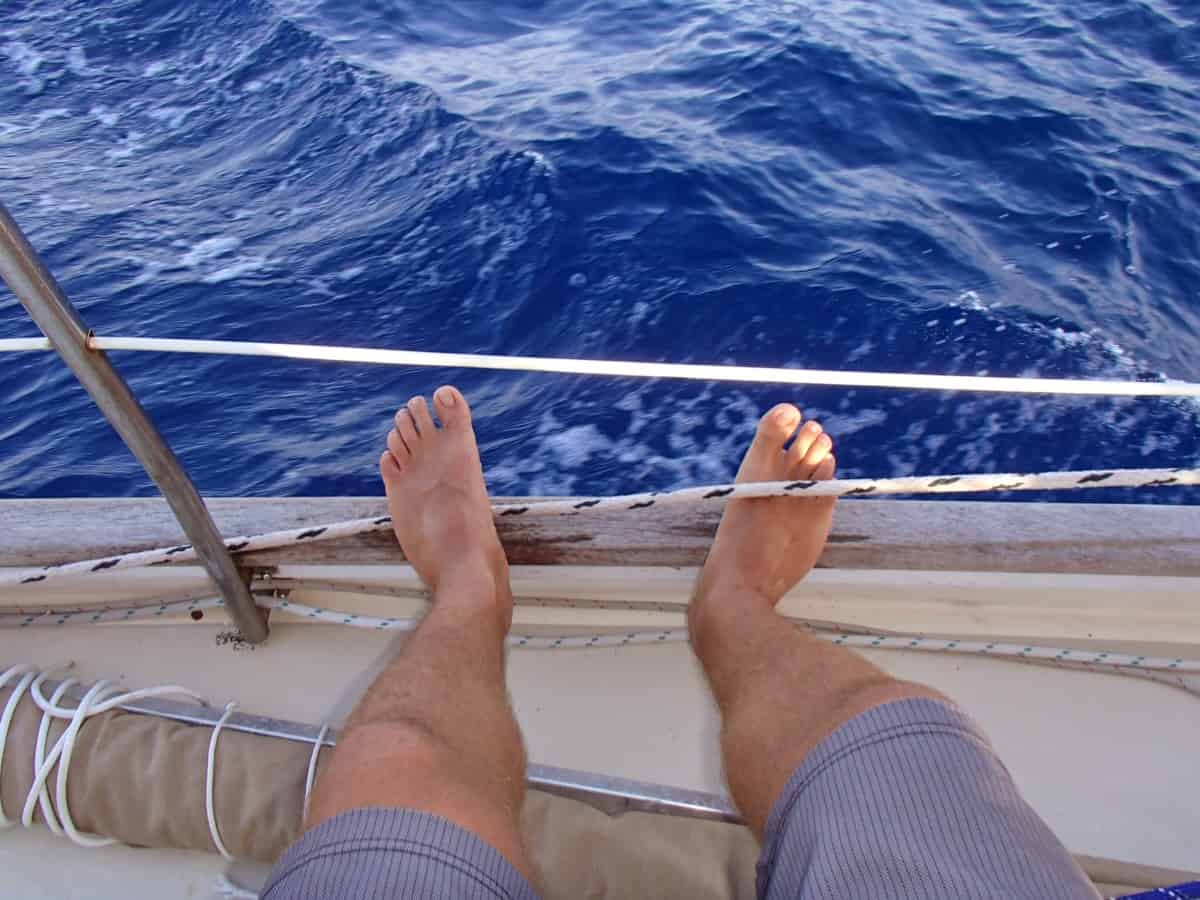As an Amazon Associate, we earn from qualifying purchases. We may also earn commissions if you purchase products from other retailers after clicking on a link from our site.
Many sailors consider sailing across the Atlantic as the ultimate proof of their skills. But bluewater sailing requires a safe vessel that can withstand the harsh conditions of the open sea. Many are these discussions about whether or not catamarans are suitable for crossing the Atlantic.
It is safe to cross the Atlantic in a catamaran thanks to the sailboat’s design. Catamarans do not have ballasts in their keels. Instead, they have two hulls and rely on a wide beam for stability. The design increases buoyancy, speed, and motion comfort, making the boat safe for long-distance travel.
Keep reading to understand why a catamaran is a safe vessel for crossing the Atlantic Ocean. This article will also show you the type of catamaran you should travel in if you plan to sail long distances.
Are Catamarans Good for Long-Distance Travel?
One of the first things you need to consider when planning a long-distance trip on the water is whether your vessel can handle that type of journey. And cats come in different sizes, ranging from small to large boats.
As you probably already know, not all boats can travel long distances, particularly across the ocean.
You need a sailboat with a large fuel tank capacity, enough room to house the crew and passengers, and the ability to sail in heavy seas.
Catamarans are good for long-distance travel, as they are often more comfortable and stable than monohull sailboats. An Atlantic-crossing suitable catamaran measures around 40 to 50 feet (12 to 15 meters) long, which is size is ideal for long-distance travel with a small crew.
Choosing the right size for an ocean-crossing cat is important. A large-enough sailboat provides adequate room in the living spaces and can accommodate cooking spaces, separate dining areas, private bedrooms, and more than one bathroom.
Another reason cats are good for long-distance travel is their speed.
Most catamarans can travel up to about 150 nm per day.
Some catamarans can even travel a little over 200 nm a day.
In any case, the speed and distance a cruising cat can cover per day all comes down to wind strength and sailing performance.
Can Catamarans Handle Rough Seas?

Catamarans were originally logs bound together for fishing in India. Their original name is kattumaram.
Of course, modern cats come in sophisticated designs suitable for fast sailing and leisure cruise in open waters.
But can cats handle big waves and stormy weather conditions on the sea?
Catamarans can handle rough seas and maintain good stability in stormy weather. The vessels have a lot of buoyancy and high resistance to capsize, furthermore, the high speed allows them to faster reach their destination.
However, not all cats are created equal.
Knowing the various types of cats and their best use cases is essential if you plan to cross the Atlantic Ocean in a catamaran.
Here’s a small list of the common catamaran types:
- Racing catamarans
- Beach catamarans
- Cruising catamarans
The most suitable catamaran category for sailing across the Atlantic Ocean or even around the world is the cruising catamaran.
These sailboats can handle rough seas because they have extra safety features not found in other categories, such as recreational racing cats.
Safety Features of Cruising Catamarans
Cruising cats have extremely strong cockpit windows that can withstand boisterous ocean waves crashing into them. These windows are strong enough to resist storms during heavy weather sailing.
Other design elements that ensure the safety of cruising cats are:
- Redundant systems: Cats have several redundant systems or duplicated critical components that increase their reliability in the open sea. These include two motors, two hulls, and two rudders. Even if one hull gets destroyed the other hull will be able to keep the boat afloat.
- Watertight emergency hatches: Cruising catamarans have closely sealed hatches that serve a dual purpose. First, they provide access to different compartments in the sailboat like the living space, cargo, and storage. Secondly, watertight hatches keep water out of these compartments, making them safer in stormy weather. There are also hatches made too evacuate the crew if the caravan gets flipped upside down.
- Positive buoyancy: The construction materials for catamarans and the absence of ballast make them very stable on the water.
Remember that all sailboats experience some degree of rolling when moving through rough waters.
Cats are no different, but the good news is that cruising catamarans are stable and very unlikely to capsize due to their wide base and high stability.
Still, trimarans have even greater stability than catamarans! Read more here.
Overall, the safety features and design elements mean that voyaging across the Atlantic in cruising catamarans is generally safe.
How Long Does It Take To Cross the Atlantic in a Catamaran?

It takes two to four weeks to cross the Atlantic in a catamaran. However, the duration depends on several factors, including the route, vessel speed, and weather conditions.
You can complete your voyage in about three weeks if you maintain an average speed of 9 to 10 knots (10.5 to 11.5 mph, 16.89 to 18.5 kph).
On the other hand, it is more common to spend a little over a month crossing the Atlantic Ocean since maintaining an average speed above 6 kts on a cruiser cat is very hard.
For example, your trip may extend for a few extra days if there is no wind or low wind strength for some days. Especially in the doldrums.
So, if you plan to cross the Atlantic, it is best to bring supplies that will last everyone on board for up to a month, especially if you are not sure about the weather.
After all, sailboat safety isn’t only about the vessel. You also want to consider the well-being of the crew and passengers onboard the boat.

